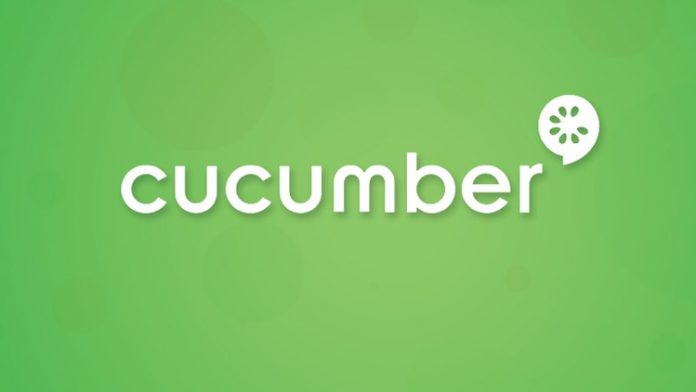Cucumber Interview Questions | Most Asked Questions For Interview
Cucumber Interview Questions Set 1
#1 Explain Cucumber shortly.
Cucumber is an instrument based on Behavior Driven Development methodology. The main objective of the BDD framework is to compose a mixture of project roles such as Quality assurance, Developers, Business Analysts, etc. to comprehend the application without pitching deep into the technical aspects.
#2 Define BDD?
BDD is a procedure of developing software based on TDD (test-driven development) which focuses on the behavioral terms of software testing units.
#3 What language is used by Cucumber?
Gherkin is the language that is used by the Cucumber tool. It is a simple English representation of the application behavior. Gherkin language uses several keywords to describe the behavior of applications such as Feature, Scenario, Scenario Outline, Given, When, Then, etc.
#4 Explain the use of Background keyword in Cucumber?
Background keyword is used to group multiple given statements into a single group. The keyword mostly used when the same set of given statements is repeated in each scenario of the feature file.
#5 What is meant by a feature file?
A feature file must provide a high-level description of an Application Under Test (AUT). The first line of the feature file must start with the keyword ‘Feature’ followed by the description of the application under test.
A feature file may include multiple scenarios within the same file. A feature file has the extension .feature.
Cucumber Interview Questions
#6 What software do you need to run a Cucumber Web Test case?
- Ruby and its Development Kit
- Cucumber
- IDE like ActiveState
- Watir ( To simulate browser)
- Ansicon and rspec (if required)
#7 What are the various keywords that are used in Cucumber for writing a scenario?
Mentioned below are the keywords that are used for writing a scenario:
- Given
- When
- Then
- And
#8 What is the purpose of a Scenario Outline in Cucumber?
A scenario outline is a way of parameterization of scenarios. This is ideally used when the same scenario needs to be executed for multiple sets of data, however, the test steps remain the same. Scenario Outline must be followed by the keyword ‘Examples’, which specify the set of values for each parameter.
#9 What programming language is used by Cucumber?
Cucumber tool provides support for multiple programming languages such as Java, .Net, Ruby, etc. It can also be integrated with multiple tools such as Selenium, Capybara, etc.
#10 What do you think when is cucumber used in real-time?
Cucumber tool is normally used in real-time to mark receipt tests for an application. It is normally used by non-technical people such as Functional testers, Business analysts, etc.
#11 What is the purpose of the Step Definition file in Cucumber?
A step definition file in Cucumber is used to segregate the feature files from the underlying code. Each step of the feature file can be mapped to a corresponding method on the Step Definition file.
While feature files are written in an easily understandable language like, Gherkin, Step Definition files are written in programming languages such as Java, .Net, Ruby, etc.
#12 What are the major advantages of the Cucumber framework?
Given below are the advantages of the Cucumber Gherkin framework that make Cucumber an ideal choice for rapidly evolving Agile methodology in today’s corporate world.
- Cucumber is an open-source tool.
- Plain Text representation makes it easier for non-technical users to understand the scenarios.
- It bridges the communication gap between various project stakeholders such as Business Analysts, Developers, and Quality Assurance personnel.
- Automation test cases developed using the Cucumber tool are easier to maintain and understand as well.
- Easy to integrate with other tools such as Selenium and Capybara.
#13 Provide an example of a feature file using the Cucumber framework.
Following is an example of a feature file for the scenario ‘Login into the application’:
Feature: Login to the application under test.
Scenario: Login to the application.
- Open the Chrome browser and launch the application.
- When the user enters the username onto the UserName field.
- And User enters the password into the Password field.
- When the user clicks on the Login button.
- Then validate if the user login is successful.
#14 Give an example for step definition using the “Given” function?
For example to make visitor visit the site “Yahoo” the command we use for given
Given (/^ I am on www.yahoo.com$/) do
Browser.goto “http://www.yahoo.com.”
end – This will visit www.yahoo.com
#15 What are the differences between Jbehave and Cucumber?
Although Cucumber and Jbehave are meant for the same purpose, acceptance tests are completely different frameworks
- Jbehave is, and Cucumber is Ruby-based
- Jbehave are based on stories while Cucumber is based on features
Cucumber Interview Questions
#16 Explain test harness
A test harness for Cucumber and rspec allows for separating responsibility between setting up the context and interacting with the browser and cleaning up the step definition files
#17 What is cucumber testing?
Cucumber is a tool based on Behavior Driven Development (BDD) framework which is used to write acceptance tests for the web application. It allows automation of functional validation in an easily readable and understandable format (like plain English) to Business Analysts, Developers, Testers, etc.
#18 What is hooks in cucumber?
Cucumber supports hooks, which are blocks of code that run before or after each scenario. You can define them anywhere in your project or step definition layers, using the methods @Before and @After. Cucumber Hooks allows us to better manage the code workflow and helps us to reduce code redundancy.
#19 How do you write BDD test cases?
These stages and principles are summarised here:
- All tests are written before the code.
- Write a test.
- Run all tests to check that the new test fails.
- Write the code.
- Re-run the tests.
- Refactor the code if necessary.
- Re-run the tests.
#20 Can we run multiple feature files in cucumber?
You can either use selective feature files or selective scenarios in the feature using tags. Please try this solution. Let’s consider you have n number of feature files and you need to run only selective feature from that. Then name each feature file with @tag name.
If You Want To Get More Daily Such Jobs Updates, Career Advice Then Join the Telegram Group From Given Link And Never Miss Update.
Join Telegram Group of Daily Jobs Updates for 2010-2021 Batch: Click Here
Why You’re Not Getting Response From Recruiter?: Click here
How To Get a Job Easily: Professional Advice For Job Seekers: Click here
Cognizant Latest News: Up To 20K+ Employees Will Be Hired: Click here
COVID-19 Live Tracker India & Coronavirus Live Update: Click here
Why Remove China Apps took down from Play store?: Click here
Feel Like Demotivated? Check Out our Motivation For You: Click here
List of Best Sites To Watch Free Movies Online in 2020: Click here
5 Proven Tips For How To Look Beautiful and Attractive: Click here

































